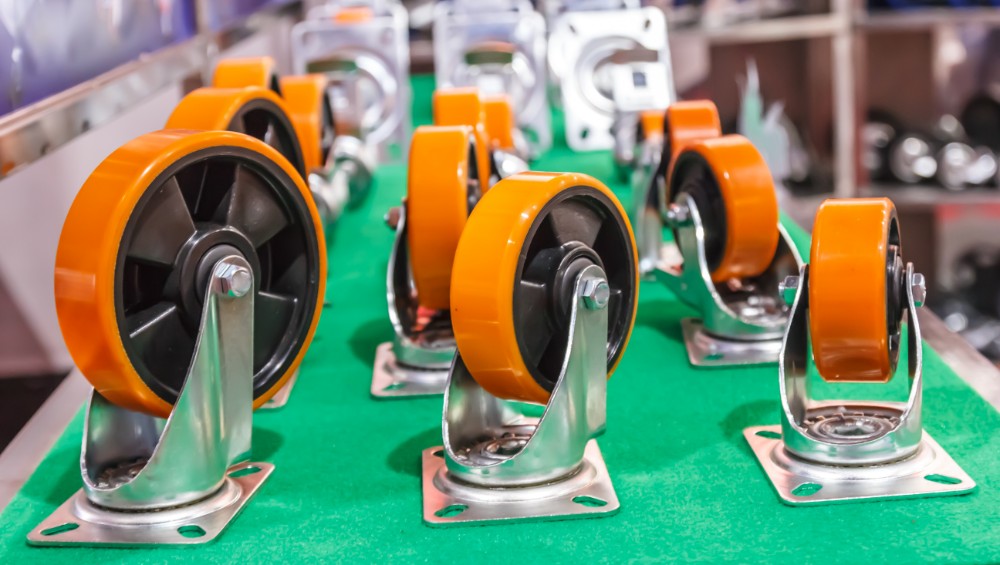What is Polyurethane?
Polyurethane is a versatile polymer that stands out for its unique combination of properties, making it an essential material in various industries. Unlike rubber, which typically offers flexibility and elasticity as its primary features, polyurethane can be engineered to exhibit a broad spectrum of characteristics ranging from soft and flexible foams to rigid materials. This adaptability allows for custom formulations tailored to specific applications, whether it’s providing cushioning in furniture or serving as durable coatings for automotive parts.
One of the fascinating aspects of polyurethane is its ability to mimic the qualities of natural materials while offering enhanced durability and resistance. For instance, polyurethane’s chemical resistance makes it suitable for applications where exposure to harsh chemicals would compromise rubber alternatives. Additionally, it boasts superior abrasion resistance and load-bearing capacities, positioning it as a preferred choice in demanding environments—such as flooring systems or industrial wheels—where performance is critical. With ongoing innovations in formulation technologies, the future promises even more advanced derivatives of polyurethane that may further expand its applications beyond what we can currently envision.
What is Rubber?
Rubber, a versatile and widely used material, is derived from the sap of rubber trees through a process called tapping. This natural polymer has unique properties that make it an indispensable component in various industries, ranging from automotive to healthcare. One of rubber’s most notable characteristics is its elasticity, allowing it to stretch and return to its original shape without losing integrity. This adaptability not only makes rubber ideal for products like tires and seals but also resonates with our daily lives in items as simple as erasers and elastic bands.
The complexity of rubber doesn’t end with its physical properties; it also encompasses a rich history intertwined with cultural significance. In regions where rubber trees thrive, such as the Amazon Rainforest, indigenous communities have long utilized this material for tools and crafts, showcasing its deep-rooted connection to human innovation. Furthermore, advancements in synthetic rubber production have revolutionized manufacturing processes by enhancing durability while maintaining flexibility—key advantages when compared to alternatives like polyurethane. As industries continue evolving, understanding what rubber truly represents can enhance decision-making in selecting the right materials for specific applications.
Advantages of Each Material
When comparing polyurethane and rubber, each material boasts distinct advantages that cater to various industrial and commercial applications. Polyurethane is lauded for its superior durability and resistance to abrasion, making it ideal for environments that experience wear and tear. Its versatility extends to varying hardness levels; from soft foams used in cushioning to rigid forms employed in structural components, polyurethane offers a tailored solution for almost any need. Furthermore, its resistance to oils, chemicals, and extreme temperatures enhances longevity, fostering less frequent replacements which can significantly reduce long-term costs.
On the other hand, rubber shines in providing exceptional elasticity and flexibility. This characteristic allows rubber products to absorb shocks efficiently while returning quickly to their original shape. Such resilience makes it a favored choice in musical instruments or automotive components where vibration dampening is crucial. Additionally, natural rubber provides excellent grip thanks to its high friction coefficient—an essential feature for tires or sporting equipment where safety is paramount. Understanding these unique benefits helps industries make informed choices based on specific performance requirements rather than merely a surface-level assessment of hardness or convenience.
Common Misconceptions About Hardness
One of the most pervasive misconceptions about hardness is that it equates directly to durability and resilience. Many assume that harder materials are always superior; however, this isn’t necessarily true. For instance, while polyurethane exhibits higher hardness ratings than rubber, this can make it more brittle under certain conditions—meaning it might crack or fracture where a softer material would bend or flex. Understanding the nuances of material performance in specific applications is crucial; hardness does not automatically imply long-lasting effectiveness.
Another common misunderstanding lies in the perception that hardness is an absolute measure rather than a relative one. Hardness exists on a spectrum influenced by factors such as temperature, environmental exposure, and manufacturing processes. For example, rubber compounds can be engineered to achieve varying degrees of hardness through additives and cross-linking agents. This flexibility allows tailored solutions for diverse applications—from soft cushioning materials to rigid components—challenging the notion that type alone defines usability. The real question often centers around context: what works best for your specific needs? Emphasizing application suitability opens new avenues for innovation and problem-solving in material selection.
Conclusion: Choosing Between Polyurethane and Rubber
In the quest to determine whether polyurethane is harder than rubber, it’s essential to consider not just the material properties but also the application context. Each material brings its own unique set of advantages and disadvantages, making the choice heavily reliant on specific needs. For instance, polyurethane often excels in environments that demand wear resistance and durability, such as industrial settings. On the other hand, rubber shines when flexibility and elasticity are paramount—think of applications like tires or vibration dampening.



